

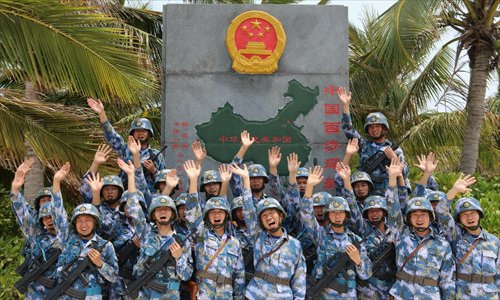 |
| Chinese soldiers guard Yongxing Island in the South China Sea. (Guo Yuandan/GT) |
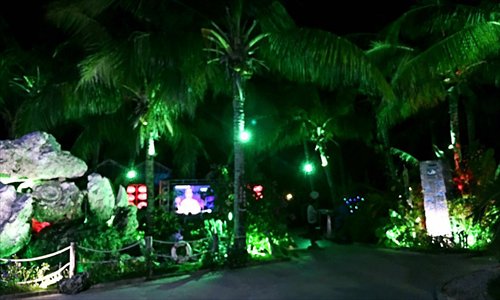
Yongxing Island at night. Photo: Guo Yuandan/GT
Confidence
In February, several American media outlets reported that China has placed two batteries of eight surface-to-air Hongqi-9 missiles and radar on Yongxing Island, and accused China of "further militarization" in the region.
In response, the Chinese Ministry of National Defense (MOD) told the Global Times on February 17 that "China has deployed sea-air defense in the related islands and reefs for years. The speculation of Western media is purely them repeating the 'China threat'."
At a museum set up by the troops, the history of the Xisha Islands including the invasions of France, Japan and Vietnam are recorded.
On Yongxing, there stands other physical evidence which marks Chinese ownership of the Xisha Islands, including a monument erected on November 24, 1946 by Zhang Junran, a lieutenant of the naval command of the then Republic of China government.
In 1945, Japan announced its unconditional surrender. According to the Cairo Declaration and the Potsdam Proclamation, in September 1946 the Chinese government organized a navy formation to recover the Xisha Islands and other South China Sea islands.
Zhang was adviser of the formation and joined the recovery. Later, he was appointed as the first director of the management office of Xisha Islands, according to the PLA Daily.
In January 1974, the Chinese navy launched a war of self-defense and counterattack, recapturing the Xisha Islands after they were occupied by South Vietnam.
Beside the monument, there's a cannon tower that was built by the Japanese. Climbing it and taking in its panoramic views, its hard to imagine the conflict that took place here in the past.
The Yongxing School lies peacefully on the Beijing Road. On the exterior wall of Li Ruyin's classroom on the second floor is written "Sovereignty Sansha, Beautiful Sansha and Happy Sansha." Li said she loves her life there. "I like it here. The sea is beautiful and has three colors, white, green and blue," the girl said proudly.
Yongxing itself is like a picture, embodying "the past and present, war and peace, and capable to fight to stop war."
However, the US has made frequent patrols with excuse of "free navigation" in the South China Sea and even held large-scale military drills in the area with some countries, which has fueled regional tensions.
A soldier said Xisha's peace has been broken by the increasing presence of foreign fleets. According to Jin Lei who always takes on the combat readiness duty, the duty is very tense as the emergencies are becoming more often. But he appears more confident.
"The equipment has been renewed, including new types of missile corvettes and frigates. Aside from the fleet, air deployment has also increased. With the use of information facilities, I feel more and more confident," he said.
 |
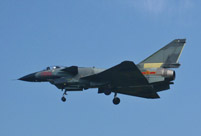 The evolution of J-10 fighter
The evolution of J-10 fighter Top 10 Asian beauties in 2016
Top 10 Asian beauties in 2016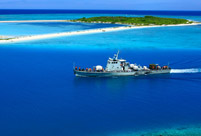 What's happening in Xisha Islands?
What's happening in Xisha Islands? When female soldiers meet flowers
When female soldiers meet flowers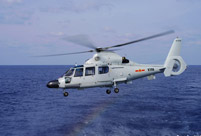 North Sea Fleet conducts drill in West Pacific Ocean
North Sea Fleet conducts drill in West Pacific Ocean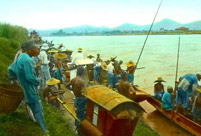 Old photos record the change of Sichuan over a century
Old photos record the change of Sichuan over a century Breathtaking aerial photos of tulip blossoms in C China
Breathtaking aerial photos of tulip blossoms in C China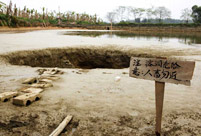 Horrific: Pit swallows 25 tons of fish overnight
Horrific: Pit swallows 25 tons of fish overnight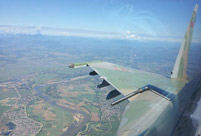 Vietnamese Su-30 fighters fly over Nanwei Island in South China Sea
Vietnamese Su-30 fighters fly over Nanwei Island in South China Sea Top 20 hottest women in the world in 2014
Top 20 hottest women in the world in 2014 Top 10 hardest languages to learn
Top 10 hardest languages to learn 10 Chinese female stars with most beautiful faces
10 Chinese female stars with most beautiful faces China’s Top 10 Unique Bridges, Highways and Roads
China’s Top 10 Unique Bridges, Highways and Roads High-profile cases of child abuse are just the tip of the iceberg expert
High-profile cases of child abuse are just the tip of the iceberg expert Film watchdog orders online celebrity’s videos removed for vulgarity
Film watchdog orders online celebrity’s videos removed for vulgarity Narrow-minded opposition against Twitter appointment
Narrow-minded opposition against Twitter appointment Celebrity kids should be kept out of spotlight
Celebrity kids should be kept out of spotlightDay|Week